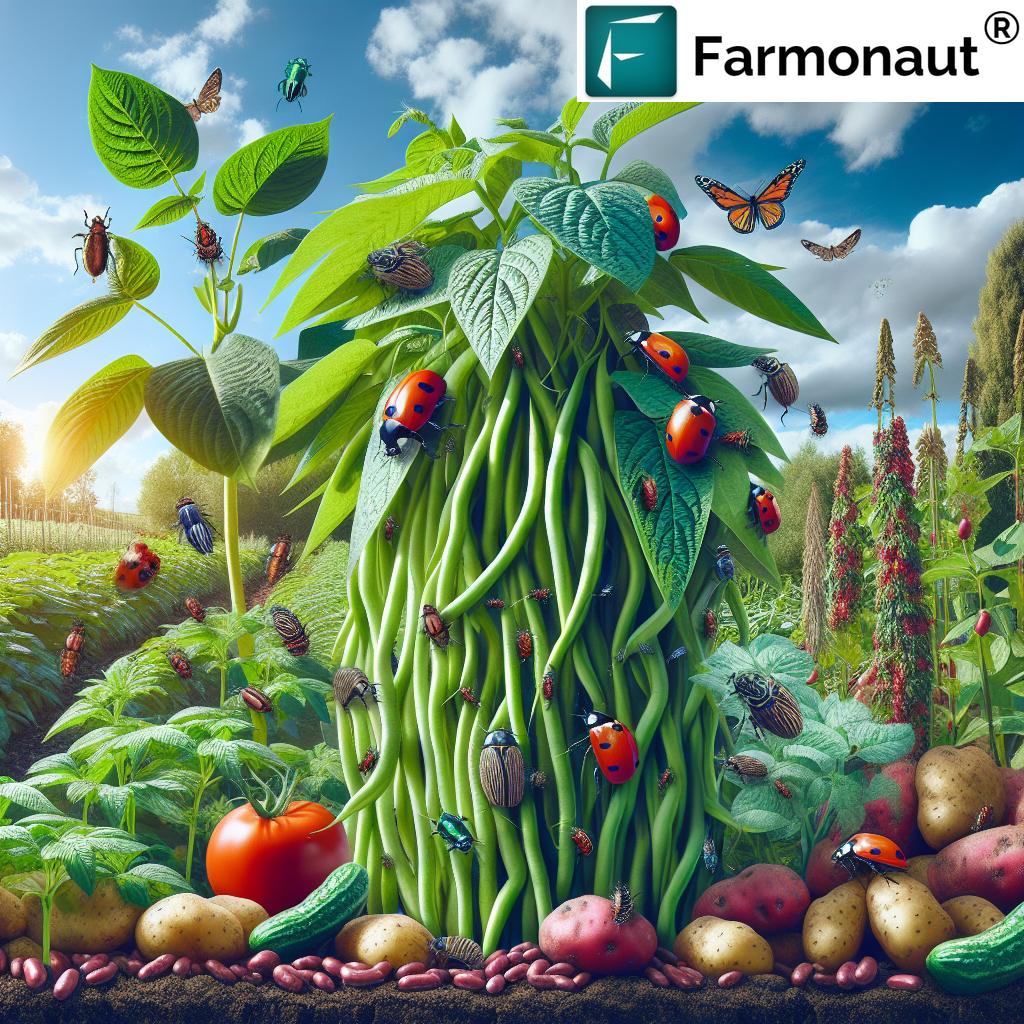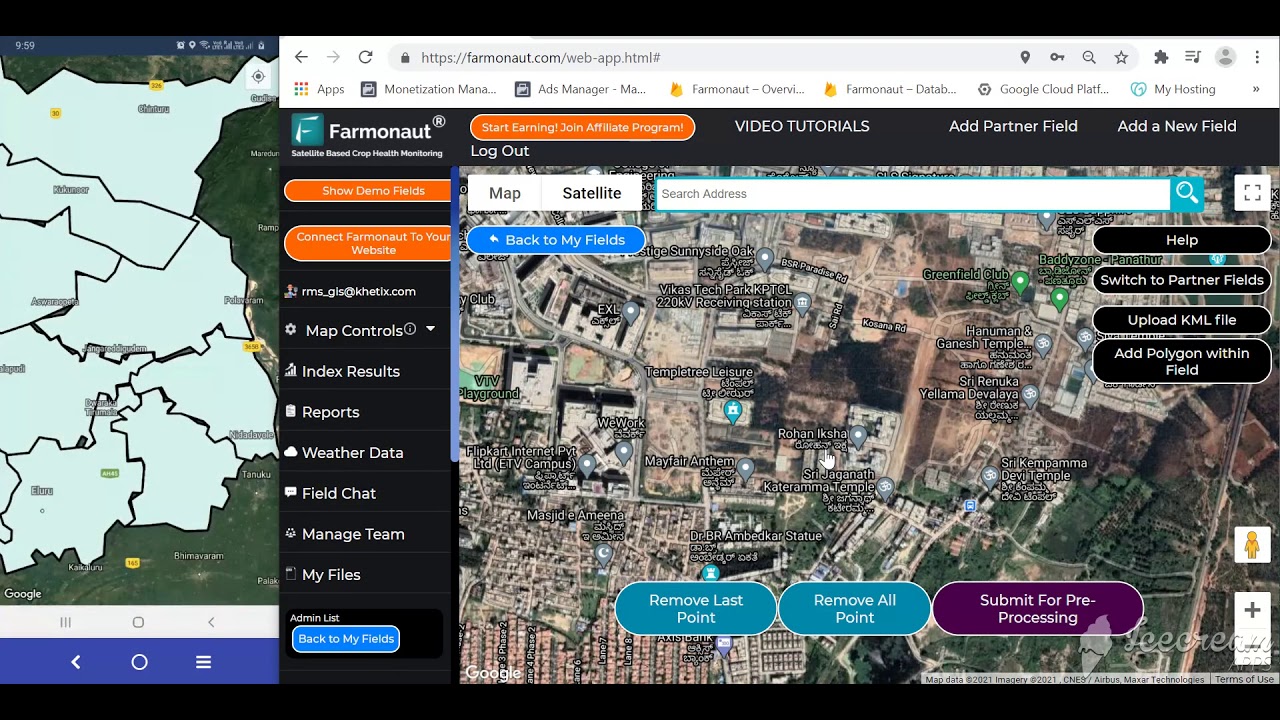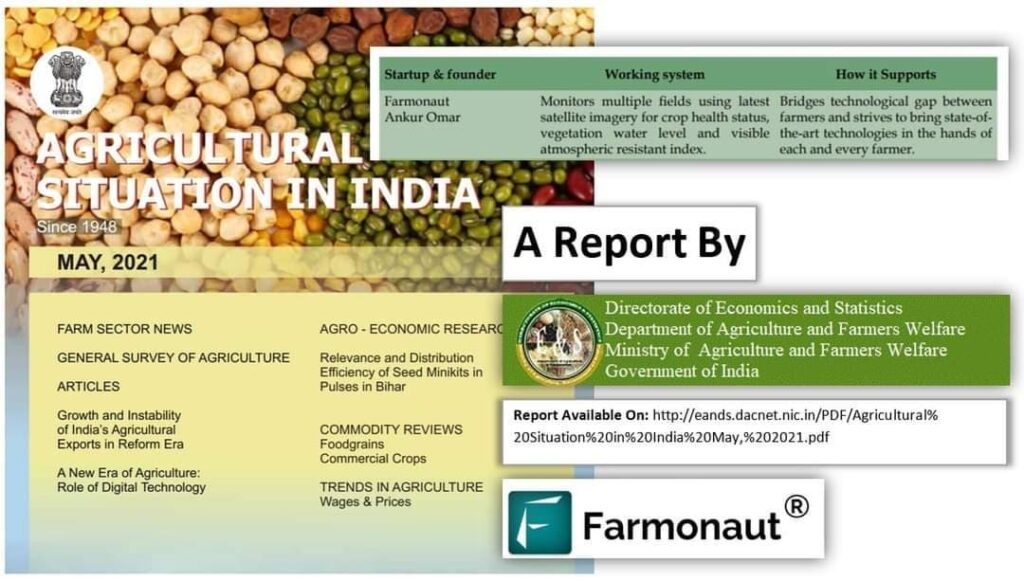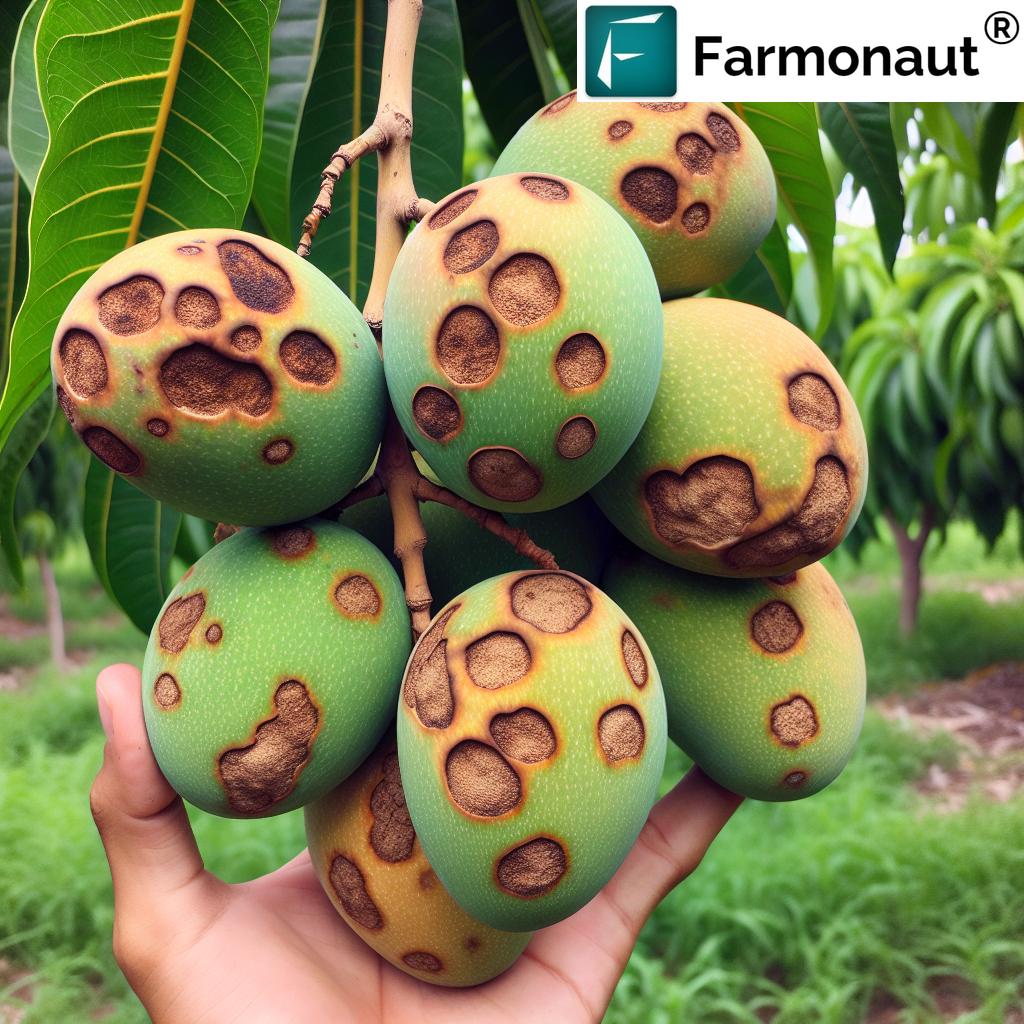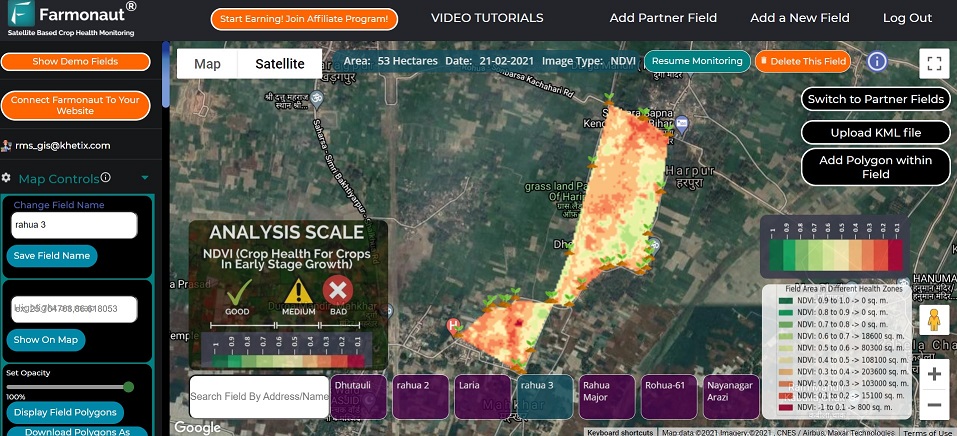Small Black Bugs on Plants: 7 Effective Solutions
“Over 80% of crop losses globally are caused by small pests, including black bugs, if left unmanaged.”
Table of Contents
- Introduction: The Problem with Small Black Insects on Plants
- How to Identify Plant Pests: Common Small Black Insects on Plants
- Impact of Small Black Bugs on Crops, Agriculture, and Forestry
- Trivia: Surprising Pest Control Facts
- Bug Identification & Solution Comparison Table
- 7 Effective Solutions for Small Black Insects on Plants
- Prevention: Stopping Pest Damage Before It Starts
- Leveraging Technology: How Farmonaut Supports Plant Pest Management
- FAQ: Small Black Insects on Plants
- Conclusion: Integrate Smart Strategies for Sustainable Plant Health
Introduction: The Problem with Small Black Insects on Plants
Small black insects on plants are a persistent challenge in agriculture, farming, and forestry worldwide. Whether you are a farmer, gardener, or manage large-scale plantations and trees, the appearance of these pests can signal trouble ahead—affecting plant growth, crop yields, and potentially incurring severe economic losses.
Why are these insects so concerning? Besides directly causing damage to crops by feeding on leaves, stems, and roots, many act as vectors for plant viruses, compounding the threats to healthy produce. Identifying these pests accurately and understanding their unique behaviors is the first step toward effective management and sustainable, economic farming.
This comprehensive guide explores the common species of small black bugs, details the damage they cause, explains how to identify plant pests efficiently, and provides 7 proven solutions—from natural controls to high-tech monitoring options such as ours at Farmonaut.
How to Identify Plant Pests: Common Small Black Insects on Plants
Accurate identification is crucial. Let’s review the small black bugs most frequently encountered on plants and crops.
1. Aphids (Plant Lice)
- Appearance: Tiny, soft-bodied insects—can be black, gray, or green. Typically form clusters on the undersides of leaves or along stems of host plants.
- Damage signs: Yellowing or curling leaves, presence of sticky honeydew (leads to sooty mold), stunted plant growth, possible spread of plant viruses.
- Cause: Aphids feed on plant sap, draining nutrients and weakening the plant. Some species, e.g., Black bean aphid (Aphis fabae), are specialized pests of legumes, beans, and sugar beets.
Learn more about aphids on leaves and targeted controls.
2. Vine Weevil (Otiorhynchus sulcatus)
- Adult Appearance: Matt black, often seen feeding at night. Leaves distinctive notched edges on leaves – a telltale sign.
- Larvae: White, C-shaped, tan-brown head—feeds on roots, sometimes causing sudden plant death if infestations are severe.
- Plants affected: Vine plants, strawberries, container-grown perennials, trees.
Proper identifying and management of vine weevils can prevent substantial root damage and crop loss.
3. Colorado Potato Beetle (Leptinotarsa decemlineata)
- Larvae: Reddish-brown with prominent black spots. Adult beetles are striped, but the larvae are often mistaken for small dark pests.
- Damage: Especially notorious for defoliation of potato plants and related crops. Rapid reproductive cycle makes control challenging.
Be vigilant for larvae clusters on potato leaves.
For an in-depth exploration, see: Colorado Potato Beetle info.
4. Thrips
- Description: Tiny, slender, sometimes black insects, often visible on flowers, onions, and vegetables.
- Damage: Leaves show silvering, irregular stippling; they can cause deformed growth and even spread viruses.
- Risk: One of the most common vectors for a variety of plant viruses.
5. Fungus Gnats
- Adult: Slender, small, black insects with long legs. Often mistaken for fruit flies indoors or in moist outdoor beds.
- Damage: While adults are mostly a nuisance, larvae can chew on delicate roots and stunt young plant growth.
Keeping soil well-drained and monitoring humidity can reduce fungus gnat infestations.
6. Black Bean Aphid (Aphis fabae)
- Appearance: Small, jet black aphid species. Tends to infest beans, legumes, and sugar beets.
- Indicators: Distorted, curled leaves; sticky secretion promoting sooty mold.
- Impact: Feed in large numbers leading to rapid stunting and even death of young plants.
7. Other Noteworthy Culprits
- Spider Mites: While often reddish or pale, some can be dark and cause similar foliage stippling.
- Flea Beetles: Small, shiny black beetles, cause pinprick holes in leaves of mustard, radish, and tomato plants.
Impact of Small Black Bugs on Crops, Agriculture, and Forestry
How exactly do these tiny invaders disrupt plant growth and agriculture? The impacts are diverse and severe:
- Reduced crop yields: By feeding on sap, roots, and leaves, pests sap energy from plants—causing stunted development and lower yields.
- Spread of plant diseases: Many are efficient vectors of devastating plant viruses, worsening losses beyond direct feeding.
- Quality and marketability loss: Honeydew secretion by aphids and whiteflies leads to unsightly sooty mold, reducing the quality of fruits and leaves (leaf damage causes).
- Plant death: Larvae of root-damaging pests like vine weevil can cause entire plants or trees to collapse suddenly.
- Economic impact: Unchecked infestations directly translate into economic losses for farmers, agribusinesses, and supply chains.
“Natural pest control methods can reduce black bug infestations by up to 60% compared to chemical-only solutions.”
Bug Identification & Solution Comparison Table
To streamline the process of matching pests to management options, refer to this data-driven pest comparison table for small black insects on plants:
| Bug Name | Estimated Identification Rate (%) | Distinguishing Features | Common Plants Affected | Estimated Damage Potential | Recommended Solution | Estimated Solution Effectiveness (%) |
|---|---|---|---|---|---|---|
| Aphids (incl. Black Bean Aphid) | 96 | Clustered on undersides of leaves, secretes sticky honeydew, soft-bodied, various colors | Beans, legumes, sugar beets, spinach, fruit trees | High | Introduce ladybugs, insecticidal soap spray, prune infested tips | 90 |
| Vine Weevil (Otiorhynchus sulcatus) | 87 | Adults: Matte black, notched leaf margins; larvae: creamy white, root feeders | Vines, strawberries, ornamental plants, trees | High | Apply nematodes, remove adults by hand, use sticky traps | 80 |
| Colorado Potato Beetle (Leptinotarsa decemlineata) | 93 | Reddish-brown larvae with black spots, striped adults on potatoes | Potatoes, eggplant, tomato | High | Handpick, crop rotation, use floating row covers | 85 |
| Thrips | 76 | Tiny, slender, fast-moving, silvery or black, causes stippling/silvering on leaves | Onions, leeks, flowers, beans, vegetables | Medium | Sticky blue traps, introduce predatory mites, spray neem oil | 75 |
| Fungus Gnats | 62 | Slender, black, long legs, attracted to moist soil | Houseplants, vegetables in moist beds | Medium | Dry soil between watering, use BTI or nematodes, yellow sticky traps | 65 |
| Flea Beetle | 82 | Small, shiny black beetle, jumps when disturbed, pin-sized holes in leaves | Mustard, radishes, tomatoes, brassicas | Medium | Floating row covers, soil cultivation pre-planting, neem oil | 74 |
| Spider Mites | 68 | Webbing between leaves, stippling, very small (dark or red) | Fruit trees, houseplants, vegetables | Medium | Increase humidity, spray with horticultural oil, release predatory mites | 78 |
7 Effective Solutions for Small Black Insects on Plants
Combining approaches is the hallmark of the modern plant pest management playbook. The following are the seven most critical solutions to controlling and preventing black bug infestations and related damage to crops from insects:
-
1. Regular Scouting and Crop Monitoring
- Inspect plants (esp. under leaves and stems) routinely.
- Find pests before populations explode; look for clusters, stunted growth, notched leaf margins, sooty mold, honeydew, or yellowing.
- Utilize modern satellite-based crop health monitoring for early detection across large farms—like our solutions at Farmonaut.
Benefit: Catching infestations early greatly reduces economic losses.
Farmonaut Large Scale Farm Management Tools allow precise, real-time detection of hotspots, plant stress, and even areas vulnerable to black bug outbreaks. -
2. Physical and Cultural Controls
- Remove and destroy heavily infested plant parts or weeds that attract pests.
- Crop rotation: Disrupts pest cycles, especially for soil-borne larvae (weevils, beetles).
- Sanitation: Avoid plant debris buildup; it harbors pest populations.
- Floating row covers: Particularly effective for flea beetles and Colorado potato beetle; exclude insects without chemicals.
- Proper irrigation: Don’t overwater – less moisture, less fungus gnat risk.
-
3. Biological Control of Insects & Natural Predators
- Release beneficial insects:
- Ladybugs = Best for aphid and thrip control.
- Parasitic wasps (Aphidius spp., Trichogramma) = Useful against caterpillars, whiteflies, aphids.
- Predatory mites = Eat thrips, spider mites.
- Nematodes = Applied to soil for vine weevil and fungus gnat larvae.
- Permanently reduces pest populations and is completely safe for plants and people!
Farmonaut’s AI advisory system can suggest when, where, and which beneficial insects or bio-controls to use on your land. - Release beneficial insects:
-
4. Natural Ways to Control Pests: Homemade & Commercial Solutions
- Insecticidal Soap Sprays: Suffix for soft-bodied pests like aphids and thrips. Safe, but thorough coverage is key.
- Neem Oil: Organic and plant-safe. Deters feeding and disrupts pest hormones, reducing outbreaks.
- BTI (Bacillus thuringiensis israelensis): Especially for fungus gnat and mosquito larvae in soil.
- Diatomaceous Earth: Dust around plant bases; scratches and dehydrates crawling insects (ensure food-grade only).
Use natural ways to control pests in rotation with other methods for best results.
-
5. Targeted Chemical Controls
- Insecticidal soaps: For aphids, thrips, spider mites (target undersides of leaves, where clusters are found).
- Spinosad or pyrethrin: Short residual organic sprays; only use as a last resort, and avoid during flowering to protect beneficials.
- Systemic insecticides: For severe outbreaks; use only after testing less harmful methods and only on non-edible plants (can move into plant sap).
- Recommendation: Always apply chemicals with precision, at correct times, and never exceed label rates.
-
6. Companion Planting & Plant Diversity
- Interplanting: Grow varieties such as marigold, nasturtium, basil, or garlic near crops – these attract beneficial insects and repel pests.
- Increase diversity to confuse pest populations and provide habitat for natural enemies.
- Try “trap cropping” – lure certain bugs to a sacrificial plant species positioned around the main crop.
-
7. Integrated Digital Solutions and Crop Traceability
- Utilize technology and AI-driven tools for continuous monitoring and management (example: Farmonaut App).
- Monitor crop health in real-time, detect stress spots, and project outbreaks using Farmonaut Satellite API data.
- Track pest dynamics and intervention results via blockchain-based traceability tools, ensuring every crop stage can be reviewed and analyzed.
Farmonaut’s Satellite Weather API offers developers and agribusiness a powerful toolkit for integrating live crop and pest status data directly into farm management systems.
Further technical details:
API Developer Docs
Prevention: Stopping Pest Damage Before It Starts
Preventing plant diseases and pest infestations is often more cost-effective and sustainable than reacting to outbreaks. Here are foundational preventive actions for every grower and agribusiness:
- Start with healthy plants: Inspect new plants for signs of infestation before introducing them to your field or greenhouse.
- Use resistant varieties: Select plant and crop varieties downbred or bred for resistance to local pests and viruses.
- Optimize cultural care: Do not overwater or overfertilize; lush, tender growth is more attractive to insects and diseases.
- Maintain crop diversity: Block monoculture by planting multiple crops to reduce attractive habitats for specific pests.
- Support beneficial insect populations: Allow some flowering “weeds” (like yarrow, alyssum) to support predator insects. Minimize pesticide use that may harm beneficial species.
For advanced forest and large plantation advisory, Farmonaut’s crop and plantation advisory tools deliver satellite data and AI insights to keep large landscapes healthy, optimize interventions, and minimize inputs.
Leveraging Technology: How Farmonaut Supports Plant Pest Management
At Farmonaut, we believe that integrating innovative technology and data-driven insights into traditional farming is the path to truly sustainable plant pest management. Here’s how our platform empowers better outcomes for farms and plantations:
- Satellite-Based Crop Health Monitoring: Our real-time, multispectral satellite imagery identifies plant health problems—including stress from insects. Early warning means faster, more effective control and minimal losses.
- Jeevn AI Advisory System: This personalized, AI-driven tool offers customized pest and disease management advice tailored to your crop’s status and local conditions.
- Blockchain-Based Traceability: Through transparency at every stage—from planting to harvest—our traceability ensures the integrity of your produce and interventions, building trust across the supply chain. Learn more: Farmonaut Product Traceability.
- Resource Management: Our platform optimizes use of water, fertilizer, and labor while minimizing chemical controls—directly lowering costs and environmental impact through smart pest monitoring.
- Carbon Footprinting: Track and manage the ecological impact of your operations as you deploy pest controls: Farmonaut Carbon Footprinting
Combined, these solutions help maximize the effectiveness of natural ways to control pests while keeping yields high and stewardship strong. For every scale—from smallholders to large agribusinesses—precision, speed, and intelligence are key advantages our technologies provide.
FAQ: Small Black Insects on Plants
Q1: What are the most common small black insects found on plants?
Aphids (including Black Bean Aphid), vine weevils, Colorado potato beetles (larvae), thrips, fungus gnats, and flea beetles are the most frequently encountered. Accurate identification is required for effective action.
Q2: How do I distinguish between aphid infestations and other black bugs?
Look for soft-bodied clusters on leaf undersides, sticky honeydew, curled or yellowing leaves, and presence of ants (they farm aphids for the honeydew).
Q3: Can black insects on plants transmit plant viruses?
Yes! Aphids and thrips are among the most important vectors of crop-damaging viruses. Preventing their outbreaks helps stop disease spread.
Q4: Are natural controls really as effective as chemical options?
Yes, especially when integrated into an overall plant pest management program. Multiple natural tactics used together can be as effective as chemicals, reduce resistance development, and are better for health and the environment.
Q5: How can technology like Farmonaut improve pest management?
With real-time satellite imagery, AI-driven advisories, and end-to-end crop traceability, Farmonaut helps growers monitor plant health, direct scouting, predict outbreaks, minimize interventions, and ultimately boost yields while reducing costs.
Q6: What is the best way to avoid economic losses from small black bugs on plants?
Combine cultural, biological, and chemical controls as needed. Monitor plants regularly, use resistant varieties, and leverage digital monitoring solutions to ensure early detection and integrated response.
Conclusion: Integrate Smart Strategies for Sustainable Plant Health
Small black insects on plants pose a significant and often underestimated threat to crops, trees, and the agricultural economy. By understanding the common pest species, the damage they cause, and identifying them with precision, you set the foundation for effective plant pest management.
Adopting an integrated approach—from regular scouting, cultural and natural controls, to high-precision satellite and AI-driven monitoring—offers the best results for both traditional and modern farms. As we at Farmonaut have shown, leveraging advanced technology can streamline pest monitoring, reduce unnecessary treatments, and sustainably boost yields for growers of every size.
Stay proactive, use a mix of prevention and intervention strategies, and take advantage of solutions that combine biological, cultural, and digital best practices. By doing so, you’ll not only minimize economic losses but also help protect the health, productivity, and resilience of your plants and crops for the future.
Ready to optimize your pest management? Start with effective monitoring—download the Farmonaut App today or get real-time insights via web, iOS, or Android.








